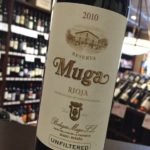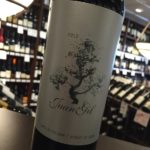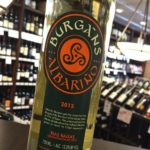Editor’s Note: This biweekly column is sponsored by Dominion Wine and Beer (107 Rowell Court, Falls Church). This column is written by Dominion owner Arash Tafakor.
Spain has one of the most amazing arrays of grape varietals in the world. With over 600 types of wine-making grapes to choose from, Spanish wine makers have an arsenal of choices to make that perfect wine, and Spanish wine comes close to perfection.
Going to your local wine store’s Spanish section could be a bit overwhelming. Spanish wine varietals are confusing even for an expert. Before you get involved in navigating and understanding Spain’s most popular varietals, it is essential that an educated consumer can interpret Spanish labeling terms.
Most Spanish wines are labeled based on how long the wine is aged and the region the wine comes from. If a label has the term joven, this indicates the wine has not been aged in oak. The term crianza means red wines are aged at least two years with a minimum of six months in oak barrels. Reserva means red wines are aged at least three years with a minimum of one year in oak barrels and the term gran reserva means the wines are aged at least five years with a minimum of eighteen months in oak.
The label of Spanish wine will also include the region the wine comes from. Premium wine regions of Spain include Rioja, Ribera del Duero, Priorat, Catalunya, Rias Baixas, Jumilla and many other smaller regions. Here are some of Spain’s most popular grape varietals.
Tempranillo
 Known as Spain’s most popular red varietal, this is the main grape in Spain’s Rioja region. This grape gives full or medium-bodied reds, with medium acidity, medium tannins and red fruit flavors. One of my favorite Rioja’s that uses predominately tempranillo is the 2010 Muga Rioja Reserva.
Known as Spain’s most popular red varietal, this is the main grape in Spain’s Rioja region. This grape gives full or medium-bodied reds, with medium acidity, medium tannins and red fruit flavors. One of my favorite Rioja’s that uses predominately tempranillo is the 2010 Muga Rioja Reserva.
This wine has been given over a year of oak aging making it a perfectly smooth balanced wine with powerful fruit flavors. Regions like Toro, Ribera del Duero, and La Mancha also widely use tempranillo in red wines.
Garnacha (Grenache)
 Garnacha grapes are large thin-skinned grapes that ripen perfectly in hot, dry climates such as Spain’s. Garnacha wines are full bodied and high in alcohol content. Garnacha typically have red fruit character with spicy notes and a low amount of tannins.
Garnacha grapes are large thin-skinned grapes that ripen perfectly in hot, dry climates such as Spain’s. Garnacha wines are full bodied and high in alcohol content. Garnacha typically have red fruit character with spicy notes and a low amount of tannins.
Garnacha is grown in many premium wine-growing regions of Spain such as Calatayud and Aragon. My favorite Garnachas are the 2013 Espelt Garnacha and 2013 Bodegas Borsao Tres Picos. Both retail around 15 dollars and deliver excellent value and quality. If you don’t mind spending more, the 2012 Alto Moncayo Garnacha is a world class Spanish Garnacha.
Monastrell (Mourvedre)
 Monastrell is the most significant grape of the region of Jumilla. Typically difficult to grow, Monastrell is a wine with high levels of tannin, high alcohol content and a slight sweetness.
Monastrell is the most significant grape of the region of Jumilla. Typically difficult to grow, Monastrell is a wine with high levels of tannin, high alcohol content and a slight sweetness.
Monastrell’s are typically earthy with hints of herbs and very low level of fruit notes making it a rich savory wine. My favorite Monastrell is the 2012 Juan Gil Monstrell. This wine is aged in French oak for one year making it a perfect wine that balances fruit, alcohol and oak tones.
Albarino
 One of my favorite white varietals in the world, Albarino is grown in the Riax Baixas region of Spain. Usually un-oaked, this grape variety gives light to medium-bodied wines with fresh green and citrus fruit and refreshing high acidity. Albarino pairs perfectly with any seafood dish as well as on its own for casual consumption.
One of my favorite white varietals in the world, Albarino is grown in the Riax Baixas region of Spain. Usually un-oaked, this grape variety gives light to medium-bodied wines with fresh green and citrus fruit and refreshing high acidity. Albarino pairs perfectly with any seafood dish as well as on its own for casual consumption.
My favorite Albarino is the 2013 Burgans Albarino. This fruit driven acidic white is light, crisp and extremely food friendly. Excellent alternative to your everyday whites such as Chardonnay, Pinot Grigio and Sauvignon Blanc.
The views and opinions expressed in the column are those of the author and do not necessarily reflect the views of ARLnow.com.


